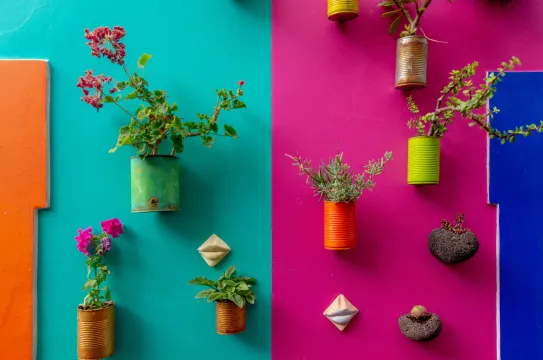Active banners: 0 Visible banners: 0
At-Home Upcycle Projects from Climate Superstars
Provided by: The National Environmental Education Foundation (NEEF) |Published on: May 20, 2021
Activity - Classroom
K12345
Synopsis
- This resource provides instructions for six upcycling projects that will turn discarded items into something useful.
- Each project includes step-by-step instructions with pictures.

Subjects: Visual and Performing Arts
Authors: The National Environmental Education Foundation (NEEF)
Region: Global
Languages: English
Teaching Materials
Positives
- These six projects are easy to do with elementary and middle school students.
- Making bird feeders or shirt coasters would be an excellent introduction to the concept of upcycling.
Prerequisites
- Each project requires different materials.
- Younger students will need assistance with some of the projects.
Differentiation & Implementation
- After creating a project together, students could find something in their home or school that is frequently thrown away and find a way to upcycle it as a project.
- Students could hold an "Upcycled Fair" to display their creations. Students could provide written directions for visitors to take home to complete their own upcycle project.
- Other resources on this topic include this ClimateScience course on personal actions that fight climate change, this video on recycling challenges, and this video on an e-waste recycling business.
Scientist Notes
Teaching Tips
Standards
Resource Type and Format
About the Partner Provider

National Environmental Education Foundation
The National Environmental Education Foundation (NEEF) is the nation's leading organization in lifelong environmental learning, creating opportunities for people to experience and learn about the environment in ways that improve their lives and the health of the planet. NEEF is a non-partisan, non-advocacy organization working to make the environment more accessible, relatable, relevant, and connected to people's daily lives.
All resources can be used for your educational purposes with proper attribution to the content provider.



